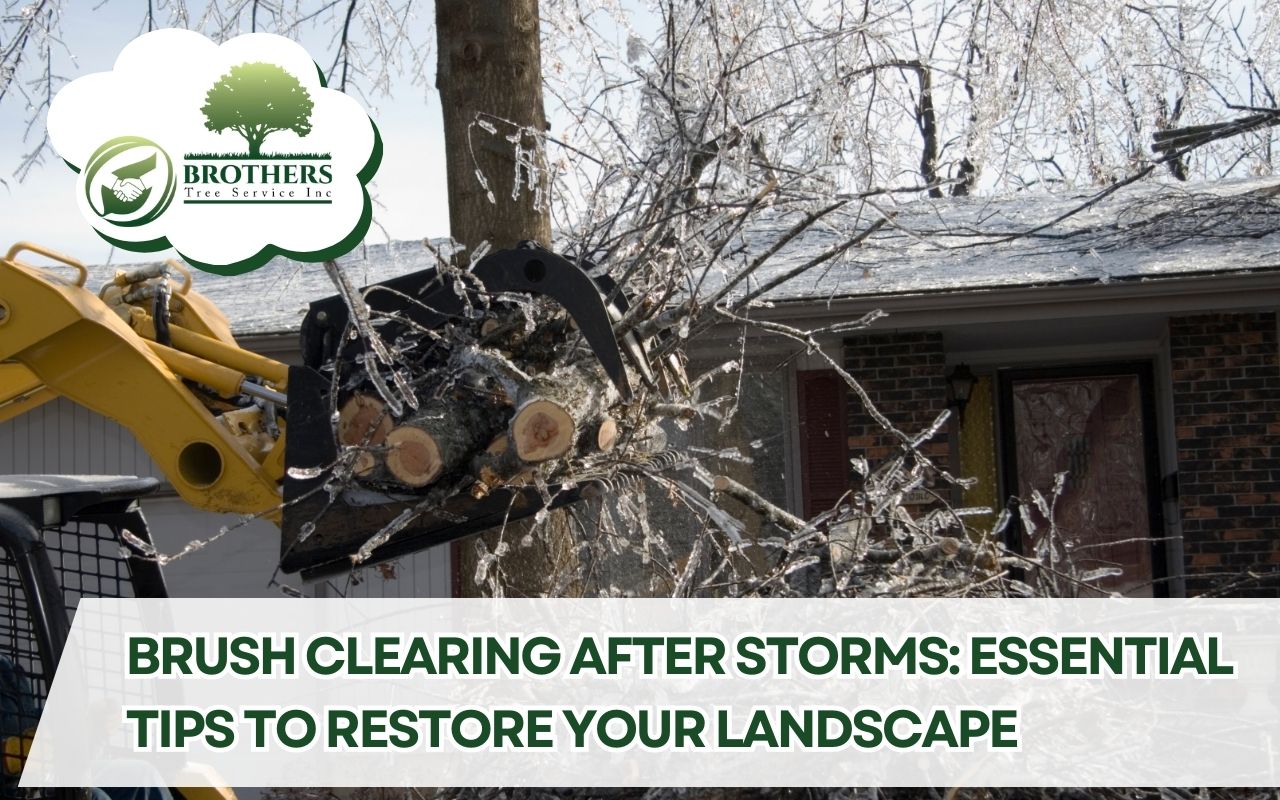
When the skies finally clear after a relentless storm, the aftermath can be both daunting and disheartening. Fallen branches, uprooted trees, and scattered debris may overwhelm your yard.
If you’re like many homeowners, brush clearing after storm cleanup can feel overwhelming. You need to restore beauty while keeping your property safe.
Fortunately, with proper planning, you can turn restoration into an opportunity to improve resilience against future storms. Brush clearing after storm is critical for both aesthetics and safety.
Leaving storm debris unattended can invite pests and disease, weakening healthy vegetation. Acting promptly protects your investment and enhances curb appeal.
Professional services like Emergency Tree Services San Diego help ensure your landscape recovers stronger and more beautiful than before.
Assessing the Damage: Understanding the Scope of Cleanup
Before picking up tools, conduct a thorough assessment of your property. Walk your yard and note all affected areas.
Identify fallen limbs, snapped trunks, uprooted shrubs, and other brush clearing after storm remnants. Watch for hazards such as hanging branches or downed power lines.
This survey helps prioritize tasks and allocate resources efficiently. Estimate the volume of debris to remove and mark zones for systematic cleanup.
Start with high-traffic areas like driveways and walkways, then move to garden beds and less-frequented corners. Knowing the scope prevents mid-project surprises and helps decide if professional help is needed.
Safety First: Precautions When Clearing Storm Debris
Conduct a secondary sweep to spot new hazards. Always wear sturdy, slip-resistant footwear. Check fasteners and maintain stable footing.
Assume downed wires are live and keep a safe distance. Contact your utility provider if electrical hazards appear. Keep children and pets away from the cleanup zone. Clear signage or barrier tape enhances safety.
Tools of the Trade: Essential Equipment for Brush Clearing
Having proper tools transforms brush clearing after storm cleanup into a manageable process. For light debris, use a leaf rake, gloves, and a wheelbarrow or garden cart.
For larger limbs, a mid-sized chainsaw or pruning saw ensures safe, efficient cutting. Wood chippers convert branches into mulch for eco-friendly disposal.
If debris is extensive, consider renting mini-skid steers or stump grinders. Professionals often handle large-scale brush clearing after storm cleanup safely and efficiently.
Proper Disposal: Eco-Friendly Options for Storm Debris
Dispose of debris responsibly. Many municipalities offer green waste programs for branches, leaves, and stumps. Separate debris to expedite pickup and reduce contamination.
Use mulch in garden beds to suppress weeds and retain soil moisture. Compost smaller twigs and leaves to enrich soil. Stumps or large root balls may require professional removal.
Seeking Professional Assistance: When to Call in the Experts
If large, heavy debris is beyond your capacity, contact professionals. Licensed tree care companies can safely remove hazardous material near structures or power lines.
Post-storm restoration specialists like Emergency Tree Services San Diego stabilize trees, remove stumps, and restore landscapes effectively. Knowing when to call experts ensures a safe and thorough cleanup.
FAQs
What is brush clearing after storm?
It is the removal of fallen or overgrown brush and debris to protect your property and restore safety.
When should I call a professional?
If debris is heavy, near power lines, or poses safety hazards, contact licensed tree care specialists immediately.
What equipment is necessary?
Professionals use chainsaws, wood chippers, and safety gear to efficiently and safely remove large brush and debris.
Can brush clearing prevent pest or fire risks?
Yes. Clearing debris reduces fire-prone material and minimizes pest infestation risk after a storm.
Maintaining a Resilient Landscape: Tips for Future Storm Preparedness
Fortify your yard against future storms. Select hardy, native plants with deep roots and diverse canopy shapes. Prune trees annually to encourage strong frameworks.
Improve drainage with rain gardens or French drains. Use compost and mulch to nourish soil and add windbreaks for vulnerable areas. Regular maintenance reduces the need for future brush clearing after storm efforts.
Transforming Chaos into Beauty: Final Touches and Landscaping Ideas
Redefine garden beds, add specimen plants, and consider hardscaping elements like gravel paths or raised planters. This converts storm aftermath into a cohesive design.
Layer seasonal annuals and perennial groundcovers to enhance color and texture. Thoughtful planning transforms brush clearing after storm cleanup into a resilient and inviting outdoor space.
For professional guidance and assistance, contact Emergency Tree Services San Diego to restore your landscape safely and efficiently.
